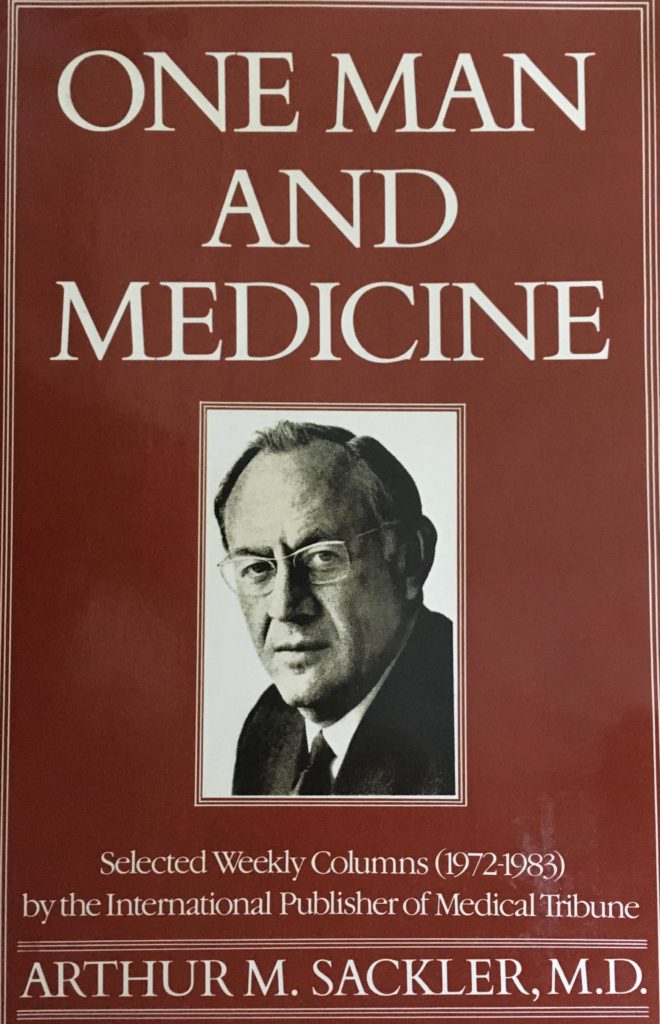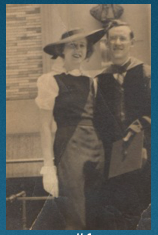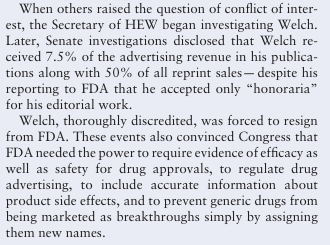The Real Arthur Sackler. Part 4: Visionary Data Crook.
Posted on | September 25, 2019 | Comments Off on The Real Arthur Sackler. Part 4: Visionary Data Crook.

Mike Magee
Series Note: This 5-Part Series will run from September 23rd to September 27, and then be available as a single document under Hcom Resources.It is based on original research in CODE BLUE: Inside the Medical-Industrial Complex.
In 1960, Arthur Sackler launched Medical Tribune, a publication that, in time, reached more than a million physicians each week in 20 countries, publishing editorials that supported free enterprise and the unified political agenda of the American Medical Association and the Pharmaceutical Manufacturers Association. These columns promoted the drug industry’s friends and hammered its foes, castigated both regulators and the makers of generic drugs, and extolled unbridled research—all points of view perfectly aligned with those of the drugmakers.

Two years later, Sackler was brought before the Senate Judiciary Committee, where Senator Estes Kefauver questioned him about misleading and deceptive drug advertising. In his appearance before Congress, Sackler portrayed himself as a highly respected New York academician, a cutting-edge research psychiatrist, and a compassionate physician dedicated first and foremost to his patients’ welfare and to the ethical standards of the profession of medicine.

But in reality, he was already the top medical marketer in the United States; the 1952 purchaser of the fledgling drug company Purdue Frederick and its star laxative, Senekot; a human experimenter in the use of unproven psychotropic drugs on hospitalized mental patients in his own branded research institute at the New York Creedmoor Mental Institution; a secret collaborator and partner with his supposed PR arch-competitor, Bill Frohlick; and the secret owner of MD Publications and Medical and Science Communications Associates, which had FDA leaders on the payroll to ensure their support of pharmaceutical clients’ products.

At least one Senate staffer understood at the time knew who Sackler really was. He prepared a memo that summed up the Sackler approach: “The Sackler empire is a completely integrated operation in that it can devise a new drug in its drug development enterprise, have the drug clinically tested and secure favorable reports on the drug from the various hospitals with which they have connections, conceive the advertising approach and prepare the actual advertising copy with which to promote the drug, have the clinical articles as well as advertising copy published in their own medical journals, (and) prepare and plant articles in newspapers and magazines.”

But Sackler was as slippery as the proverbial eel, even when confronting basic facts. Senator Kefauver asked him specifically about a small company called Medical and Science Communications Associates that was known for disseminating “fake news.” Even though the company shared the same Lexington Avenue address as the MacAdams Advertising Agency headed by Sackler, the doctor testified that he held no stock in MSC Associates and that he had never been an officer of it. This claim proved to be true, so Senator Kefauver moved on. What Sackler failed to mention was that the company’s sole shareholder was his former wife, Else Sackler.

After his death in 1987, it was discovered that he secretly owned MD Publications, a company that had funneled $287,000 to Henry Welch, the FDA regulator who headed the agency’s division of antibiotics.

Following Sackler’s death, his third wife, Jillian, whom he had met when she was a secretary at his publication, the Medical Tribune, engaged in a nasty, decade-long battle with his children for control of his estate. One of the revelations coming out of the legal battle showed that, while he had always portrayed himself as being in fierce competition with the other, most dominant drug advertising agency of the time, L.W.(Bill) Frohlich, he had in fact been partners with Frohlich all along.
One of their joint ventures, in which Sackler enjoyed a hidden ownership stake, was IMS Health, originally Intercontinental Marketing Statistics, which aggregated prescription data. Sackler realized by 1960 that merging the database with purchased AMA Physician Masterfiles would allow the creation and subsequent sale of physicians’ prescription profiling data used to microtarget compliant physicians and direct detail reps to soft targets, a process that would critically enable the progression of the opioid epidemic decades later.
Next: The Real Arthur Sackler. Part 5. Drug King Pin


